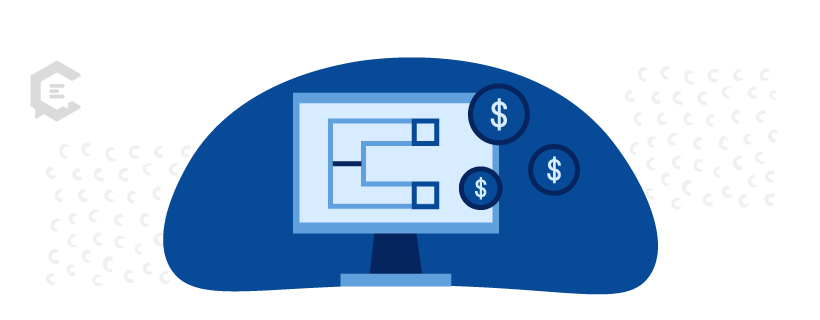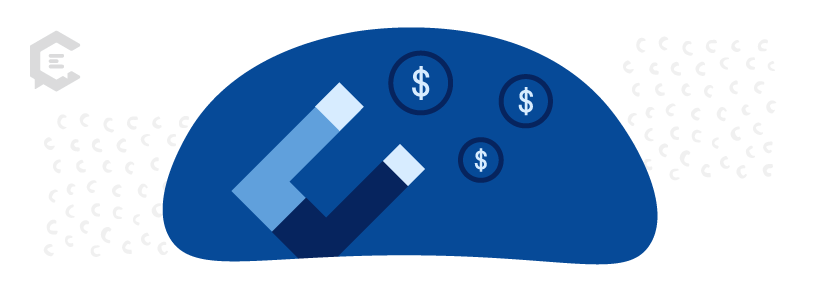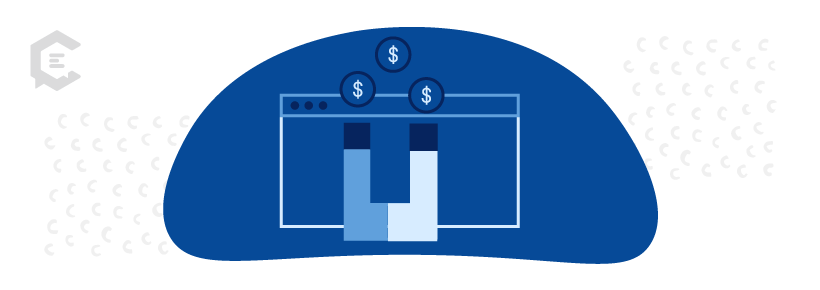What is demand generation? Demand generation encompasses a wide range of sales and marketing initiatives designed to develop interest in a company’s products or services and convert leads into customers.
Getting leads on companies that want to use your products and services is fairly simple if you follow basic marketing strategies. But those aren’t necessarily the leads that will turn into customers for marketers such as yourself.
Demand generation has emerged as one of the best strategies to achieve the objective of generating and converting leads that align with your business.
As a comprehensive strategy, demand gen delivers a consistent and effective way to engage with prospects before they become familiar with your brand and long after they have become a loyal customer.
Our guide introduces you to a demand generation strategy, a dynamic and evolving marketing tactic. You will also learn how to address challenges, take advantage of opportunities, and capitalize on marketing automation tools.

What is demand generation?
Demand generation encompasses a wide range of sales and marketing initiatives designed to develop interest in a company’s products or services and convert leads into customers.
The demand generation strategy then continues to work to keep those customers throughout their entire journey.
Demand generation, lead generation, and inbound marketing: The differences and similarities
Marketing terms, practices, and concepts are continually evolving, so it can be difficult to understand them, especially when so many seem quite similar.
However, despite those similarities, demand generation is different from both lead generation and inbound marketing.
- Demand generation is the umbrella term that encompasses both of the other tactics. Your demand generation strategy should include both lead generation and inbound marketing.
- Lead generation starts the process of attracting prospects, it essentially passes that process off to the sales team. In contrast, demand generation continues to work long after the lead converts.
- Inbound marketing is used by both lead generation and demand marketing to attract and engage prospects and customers. It involves content marketing, search engine optimization (SEO), social media marketing (SMM), and branding tactics.
The role of the demand generation marketer
The role of the demand generation marketer has a different role compared to the traditional marketer. Instead of measuring success by the leads they bring in, the demand generation marketer’s performance is measured by a total contribution to revenue.
In other words, the leads that a demand generation marketer passes over to sales must be a truly good fit for the company and therefore have a high likelihood of becoming customers.
Overall, the role of a demand generation marketer is to initiate those actions that will lead to higher conversion rates and a positive impact on revenue.
Opportunities and challenges with lead generation
An effective demand generation strategy creates opportunities for brand awareness, customer acquisition, and ongoing business growth. It also improves alignment between the sales team and marketing team, aided by smarter decisions.
However, to ensure you make the most out of this strategy, you’ll also need to address some common challenges.
Opportunities
You can enjoy a wide range of benefits for your business when you enact a demand generation strategy.
- Bolster your brand awareness: Working across digital channels, demand generation tactics can help you differentiate your brand from its competitors for those in your target audience.
- Increase your qualified lead stream: With marketing and sales working together to create consistent messaging and targeting tactics, you will get more high-quality leads than you did when those teams worked independently.
- Reduce your customer acquisition costs: A streamlined process for acquiring customers results when sales and marketing are not duplicating each other’s efforts. In turn, this means you will be able to acquire customers in fewer steps, with less time and overhead translating into cost savings.
- Drive greater revenue and profitability: The more qualified leads you get, the better your chances are to increase your conversion rate and turn that into more revenue. And, since your customer acquisition costs will be lower, you can also increase your profitability.
Challenges
However, there are many challenges to initiating a comprehensive strategy that bridges both marketing teams and sales staff.
- Gaps in existing marketing strategies and tactics: While demand generation brings all your marketing efforts together, it can’t fill in gaps that may already exist in terms of your brand identity, blogging, social media, and SEO. You’ll need to fix those first.
- Lack of understanding about your audience: Demand generation covers every touchpoint in your prospect or customer’s purchase journey. If you don’t understand what they want or what motivates them, then your demand gen tactics will not work.
- Missing conversion opportunities: Your demand generation programs are only as good as the system in place to generate leads and create conversion opportunities. That means if you don’t provide prospects with valuable content and situations where they can share their business and contact information, then you won’t be able to get the traction you need to convert visitors to your website or social media profiles.
- Lack of alignment and understanding: You may miss out on conversions or on retention because of a lack of alignment between sales and marketing. Also, there could be an ongoing misunderstanding about what customers want or a lack of research to track how customers’ needs change over time.
The overall challenge with demand generation is that it cannot fix what may already be broken within marketing and sales.
You will first need to assess your branding, marketing, sales, and analytics processes to ensure they work before implementing a demand generation strategy that encompasses all your efforts.

Demand gen strategy use cases
Whether you want to drive more client acquisitions or increase your customer retention rate, you need to know which demand generation strategies work best.
Here are some use cases of strategies that have proven to work for other companies.
- Lead nurturing: While you might think lead nurturing is just for acquiring new customers, it’s also a strategy that helps keep long-term customers. Existing customers are also leads because how you treat them can “lead” to more business with them and anyone they pass your name onto. Those companies that regularly communicate and reach out to all their leads with valuable, targeted content and new solutions reap the greatest rewards.
- Content creation: The best results come from leveraging a thoughtful and well-researched content creation program. This should be the heart of a demand generation strategy as it provides both the logical and emotional content components to connecting with prospects and keeping customers. Content such as white papers, press releases, ebooks, and articles provide credibility, while social media conversations, email campaigns, and blog posts help solidify relationships and generate interest. Your content makes the first impression and provides the engagement to keep these relationships going. When you personalize the content, it further strengthens those bonds and may even transform your customer into a brand advocate.
- Feedback mechanisms: Getting advice and insights from customers is another proven practice by companies that have enacted demand generation. This feedback not only gives you incredible insight into the minds and motivations of your target audience and existing customer base, but it also tells you what’s changed and how you could improve. Online and mobile surveys, as well as virtual or in-person focus groups, give you a good indication of customer loyalty and uncover problems that you can address more quickly to retain customers and further new lead opportunities.
Best practices for demand generation strategy success
To achieve all the benefits that demand gen can deliver, you will need to enact a set of best practices that have been proven to enhance your efforts.
- Establish SMART goals: Starting with specific goals will help ensure you have aligned your company goals and buyers’ needs. Start with SMART goals because they are based on concrete actions that can be achieved through your sales and marketing processes.
- Create a clear picture of your buyers: Develop buyer personas that detail everything you have discovered about your various target customer segments. This includes a description of your ideal customer, what they want, their pain points, how you can help them, and what types of messaging and interaction engages and motivates them to buy. Marketing and sales need to work together on this process.
- Include thorough SEO/SEM strategies in your plan: You will need to spend a significant amount of time on a keyword strategy, SEO tactics, and SEM tools such as paid search advertising to determine what attracts and retains customers who fit your buyer personas. Your research should help you better understand their search intent so you can include the keywords within your content that deliver them to your site. Use a data-driven approach to optimize your website so you can generate those qualified leads.
- Implement inbound marketing tactics: Once you have a picture of your ideal buyers, you will need to let them know how you can help them. By leveraging numerous types of content, such as video, emails, white papers and reports, social media, and blogs, you can build a case for why these buyers should choose your product or service. After all, they need specific benefits before they will make an investment in your brand.
- Partner with sales wherever possible: Gone are the days when marketing and sales work separately. Now, it’s about finding as many ways as possible to partner on reaching, attracting, and retaining customers. The perspectives and skills of both teams can improve the marketing and sales enablement content and deepen the personalization methods you utilize.

Top tools to boost demand generation results
Because demand generation is comprehensive in its reach across channels and tactics, it is important to invest in a range of tools, platforms, and software that addresses all of these areas.
You’ll need technology that helps achieve a data-driven approach to implementation and measurement.
- Content Management System (CMS): A good CMS platform helps you achieve a wide range of content creation and distribution objectives related to many channels, including your website and landing pages, email campaigns, and blog posts. Examples include WordPress, Joomla, and Drupal.
- Customer Relationship Management (CRM): Since demand generation works from the beginning of customer acquisition through your implementation of customer retention tactics, it’s critical to have a CRM system to maintain your customer knowledge base, including contacts, leads, and existing customers. This data can provide you with insights on changing needs and behaviors as well as specific information that enables personalization for greater engagement. Freshworks, Insightly, and Salesforce are three CRM solutions to consider.
- Marketing Automation: To succeed at such an expansive program, you need software that can automate many of the tasks and scale to handle the growing base of customers. You’ll be able to do more with fewer resources and thus maximize your efforts. MailChimp, ActiveCampaign, and GetResponse are three types of marketing automation software you can use.
- Conversational Marketing Tool: With the overriding goal of keeping customers for the long term, it makes sense to invest more in marketing tools that maintain dialogue and engagement with customers. This kind of tool helps you keep the human element in all customer relationships, even as you grow. Examples include Podium, Drift, and ManyChat.
- Analytics Tools: Measuring and metrics are an integral part of all marketing and sales programs, so it’s essential to find those tools that can address each aspect while also gauging the overall results of demand generation strategies. Assessing individual and integrated tactics offer deeper and more meaningful insights that empower you to make the necessary adjustments for optimization. For example, you will potentially be able to move beyond the basic metrics, such as new contacts, and start considering other factors, including conversion rates across buying states and funnel placement, the number of leads influenced, and the impact and influence rate from long-time customers. Some analytics tools to add include Google Analytics, Realtime, and Mixpanel.
Getting started with a demand generation program
Now that you can see the advantages that demand generation programs offer, it’s time to build and manage your own demand generation strategy.
Need high-quality content to support a demand generation strategy? Talk to a content specialist at ClearVoice today.



